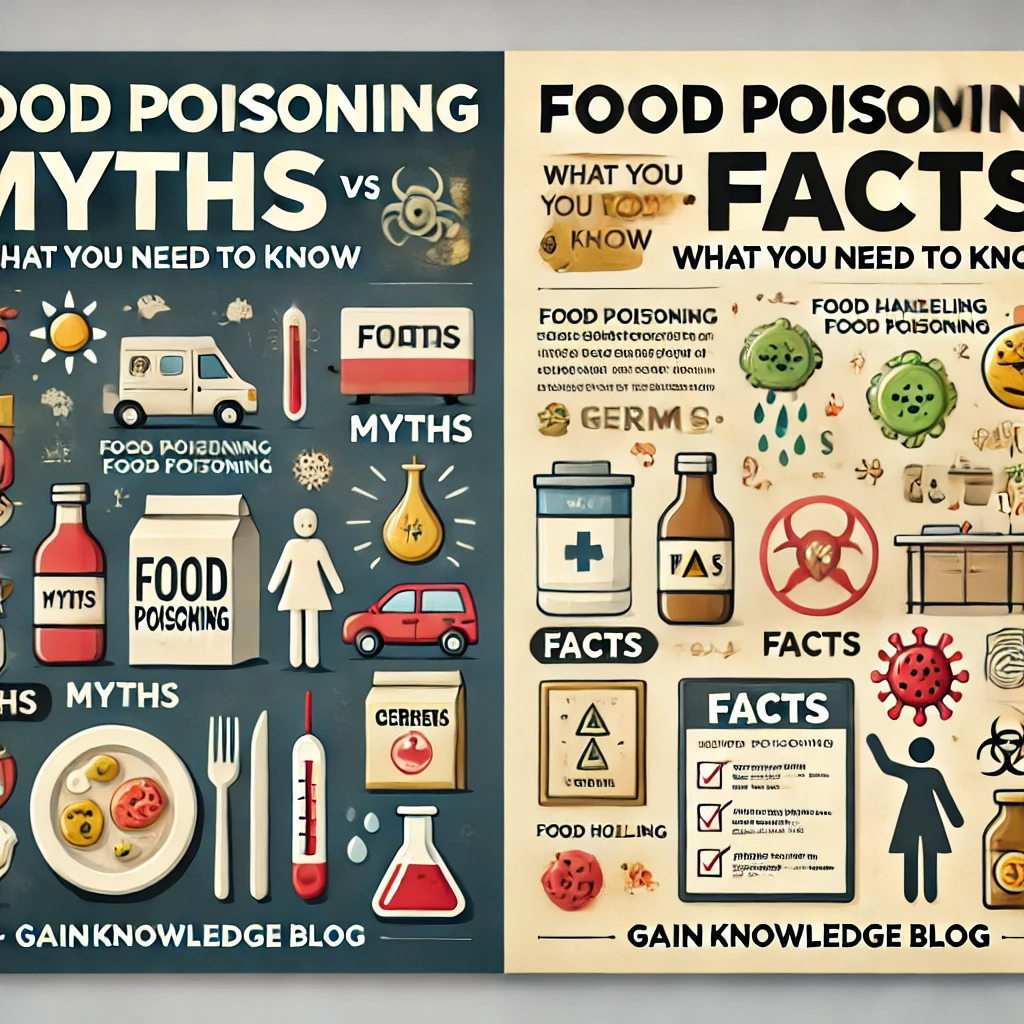Intro:
In today’s time, food poisoning has become very common, and people also have many misconceptions about it. It is important to understand these myths and facts so that you can keep yourself and your loved ones safe. Let us talk about some common myths of food poisoning and the truth behind them.
Myth 1: “Food kept in the fridge never gets spoiled.”
Fact:
This thinking is wrong. Food kept in the fridge reduces the risk of getting spoiled, but this does not mean that it will always be safe. The shelf-life of every food item is different. Like cooked rice or chicken remains safe in the fridge for only 2-3 days. If you keep it too long, bacteria will start growing, which can cause food poisoning. Therefore, consume the leftovers quickly and keep in mind the storage time.
Myth 2: “Food is safe to eat as long as it smells and tastes normal.”
Fact:
Many people think that if a food smells and tastes good then it is safe, but this is not always true. Many harmful bacteria like Salmonella and E. coli can multiply in food without affecting its smell or taste. This means that you should not always depend on appearance and taste. You should also take care of the storage and expiry date of our food.
Myth 3: “Microwaving destroys all bacteria by using heat genreated from microwave radiation.”
Fact:
Microwave reheating can make food a little safer, but not always kill all the bacteria. Microwave does not heat evenly, so some areas remain undercooked, which gives bacteria a chance to survive. Therefore, whenever reheating, ensure that the food is properly and evenly heated, and keep stirring so that the heat is evenly spread everywhere.
Myth 4: “Vegetarian food does not cause food poisoning.”
Fact:
It is wrong to think that only meat and seafood cause food poisoning. Vegetables and fruits can also be contaminated with bacteria, especially when handled unhygienic or unwashed. Like! in lettuce and spinach, cases of E. coli and Salmonella bacteria are quite common. It is important to wash vegetables and fruits properly and maintain safe storage.
Myth 5: “There is no harm in keeping food at room temperature for a while.”
Fact:
Eating cooked food at room temperature can be dangerous. Bacteria increase highly when the temperature between 40°F to 140°F. This is also called “Danger Zone”. If food is kept at this temperature for more than 2 hours, the chances of bacteria growing in it are reduced, which can cause food poisoning. Therefore, it is important to put food in the fridge as soon as possible.
Myth 6: “All cases of food poisoning are alike.”
Fact:
The symptoms and intensity of food poisoning vary based on the specific bacteria or pathogens involved.Bacteria grow rapidly in the temperature range of 40°F to 140°F. This is also called “Danger Zone”. If food is kept at this temperature for more than 2 hours, the chances of bacteria growing in it are reduced, which can cause food poisoning. Therefore, it is important to put food in the fridge as soon as possible.
Myth 7: “Food poisoning only comes from eating undercooked food.”
Fact:
This myth is wrong because food poisoning does not happen only from undercooked food. Poor handling and unhygienic practices such as dirty surfaces or hands can also cause contamination. If you touch the salad with unwashed hands, bacteria can be transferred to it, whether it is raw or cooked.
Myth 8: “Spicy food kills bacteria.”
Fact:
Many people think that spicy food can kill bacteria, but this is absolutely wrong. Spices do not kill bacteria; Yes, some spices can slow down bacteria growth, but they do not completely kill bacteria. It is important to always follow proper cooking and storage methods for food safety.
Myth 9: “Symptoms begin immediately.”
Fact:
Symptoms of food poisoning do not come instantly; Sometimes it may take 6-48 hours for symptoms to appear. It depends on the bacteria or pathogen. For example, symptoms of infection with Staphylococcus aureus may begin within 1-6 hours, while infection with Listeria may take 1-4 weeks. Therefore, it is important to keep the doctor aware of the symptoms and their timing.
Myth 10: “Food poisoning only leads to an upset stomach.”
Fact:
Symptoms of food poisoning are not just related to the stomach. Apart from diarrhea and vomiting, in some cases headache, fever, muscle aches, and fatigue may also be felt. In severe cases, dehydration and weakness may also occur, which can be dangerous for the elderly and children.
Tips to Prevent Food Poisoning:
1.Wash Hands Regularly: Always wash hands before preparing and consuming food.
2.Proper Storage: Keep leftover foods in airtight containers and store them in the fridge as soon as possible.
3.Cook at Safe Temperatures: Ensure that meat and poultry are cooked to the proper internal temperature. 4.Avoid Cross-Contamination: Handle raw and cooked foods on separate surfaces and utensils.
5.Stay Alert to Expiry Dates: Always check the expiry dates of packaged and perishable foods.
Conclusion:
Understanding the myths and truths of food poisoning will help keep you and your family safe. With accurate knowledge you will be able to follow food safety practices and minimize the risk.
Table of Contents

